Key takeaways:
- The importance of blending creativity with foundational skills in music education to foster individual expression and deeper engagement.
- Utilizing diverse pedagogical approaches, such as constructivist methods, to personalize the learning journey and enhance students’ ownership over their music education.
- Integrating music theory into practical applications, such as composition and improvisation, to make theoretical concepts tangible and improve students’ improvisation skills.
- Employing reflective practices and patience in teaching to transform challenges into joyful learning experiences, promoting an inclusive and respectful classroom environment.
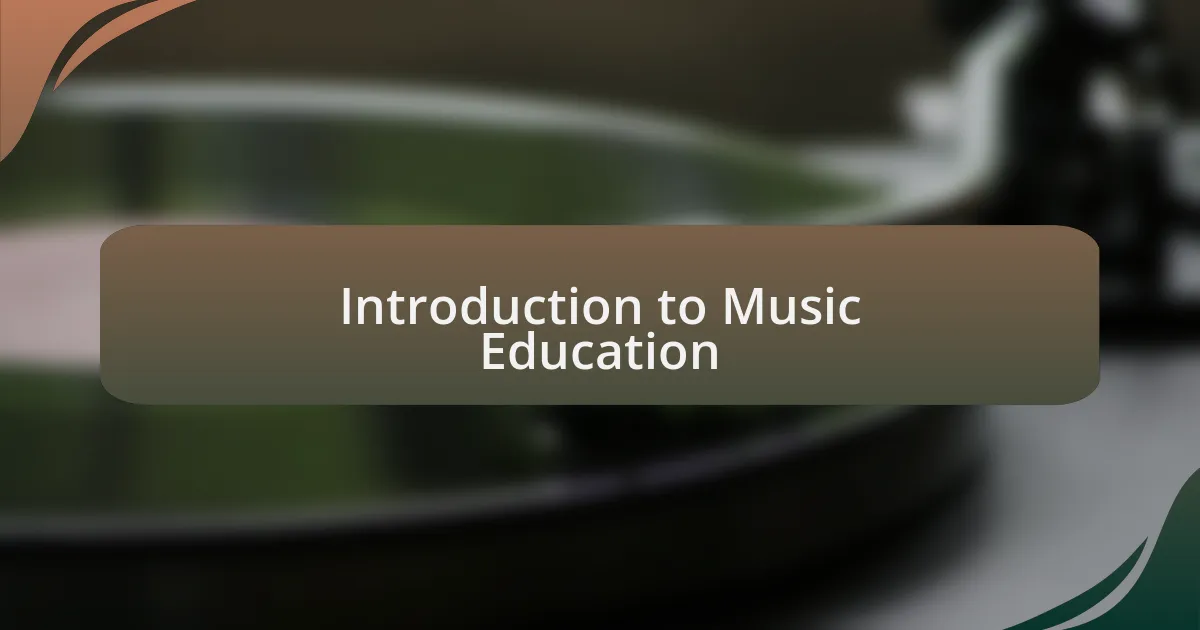
Introduction to Music Education
Music education is more than just learning to play an instrument; it’s about cultivating creativity and emotional expression. I still remember the first time I held a violin—how the notes seemed to resonate with my very soul. That experience ignited my passion for music and opened my eyes to the transformative power of education in this field.
As we delve into the realm of music education, I often wonder: how can we bridge the gap between traditional teaching methods and the diverse needs of today’s learners? In my experience, fostering an environment that prioritizes collaboration and exploration allows students to thrive, unlocking their potential in ways I never imagined during my own schooling.
It’s fascinating to see how various pedagogical approaches shape not just the curriculum, but also the students’ relationship with music. Reflecting on my journey, I’ve learned that when educators embrace creativity alongside foundational skills, it creates a rich tapestry where every learner can find their unique voice. Isn’t that what music is all about?
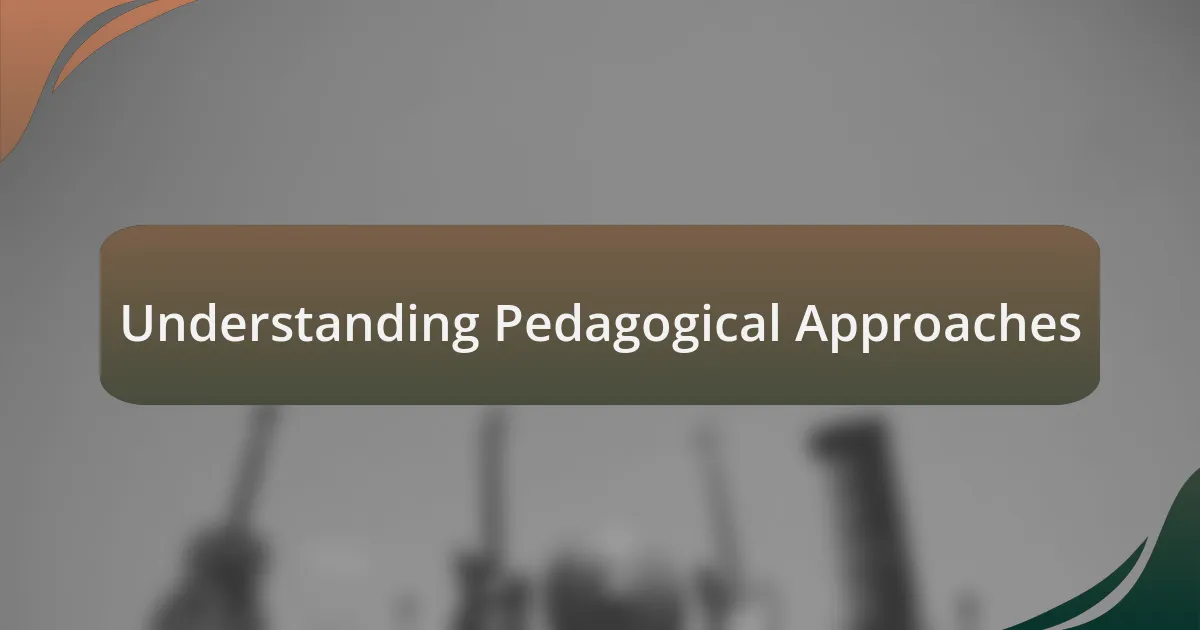
Understanding Pedagogical Approaches
Understanding pedagogical approaches in music education is crucial for developing effective teaching strategies. I recall my time in a workshop where we explored varied teaching methods, from the Suzuki approach to Orff’s approach. Each method highlighted the unique ways in which students can connect with music, encouraging me to think critically about how I could adapt these methods to meet my learners’ individual needs.
As I reflect on these approaches, I can’t help but feel inspired by the idea that learning music can be a deeply personal journey. For instance, when I embraced a more constructivist approach, allowing students to create their own compositions, I witnessed the joy on their faces. It reinforced my belief that when students are encouraged to take ownership of their learning, they engage more deeply and develop a lasting passion for music.
I often ask myself: how do we ensure that our teaching is as dynamic as the music we study? It’s vital to recognize that pedagogy is not one-size-fits-all. By thoughtfully incorporating diverse pedagogical models, I’ve seen firsthand how students flourish, forging connections to music that resonate deeply within them. This exploration of pedagogy not only enriches the educational experience but also nurtures a more profound appreciation for music itself.
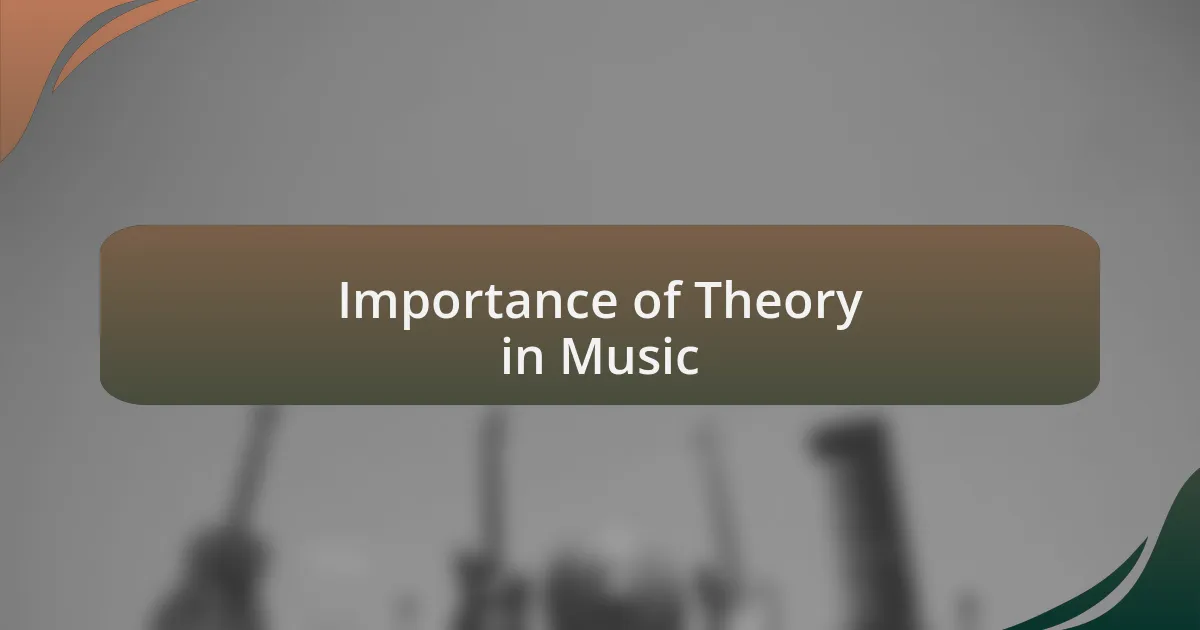
Importance of Theory in Music
The foundation of music theory lies in its power to unlock the language of music for students. I still remember a student who initially struggled with reading music notes. Once we delved into the basics of rhythm and harmony, it was as if a light bulb went on for her. She went from feeling lost to confidently expressing herself through songs she composed, highlighting how essential theory is for musical expression.
Understanding theory serves not just as an academic exercise but as a bridge between creativity and structure. I’ve often pondered how knowledge of scales, intervals, and chord progressions can elevate a musician’s improvisation skills. For instance, during a jam session with peers, I realized that those who grasped these concepts could easily contribute vibrant solos, while others hesitated. This revealed to me that theory fosters spontaneity and spontaneity is at the heart of music-making.
Moreover, theory equips students with the critical thinking skills necessary to analyze and interpret music deeply. When I introduced my class to a piece by Bach, we dissected its intricate counterpoint together. Witnessing their excitement as they unraveled the complexity of each line made me appreciate that engaging students in the theoretical aspects not only enhances their appreciation of the music but also develops analytical skills that are valuable far beyond the realm of music. What better way to cultivate connected thinkers who can express their own musical voices?
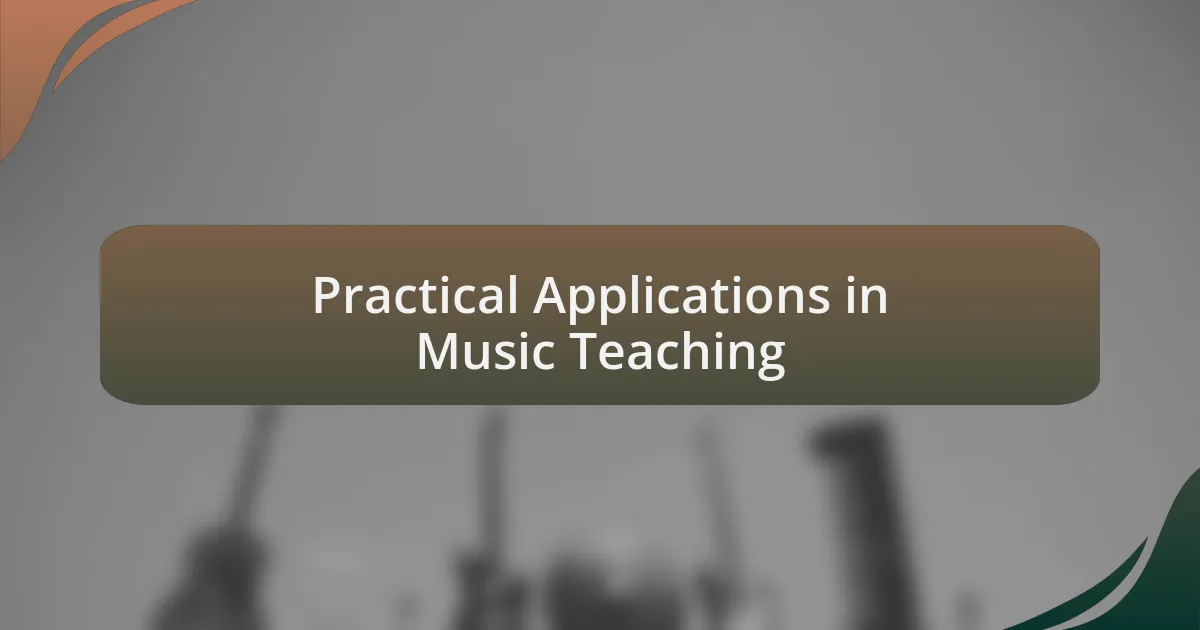
Practical Applications in Music Teaching
One practical application of music theory in teaching is through interactive composition exercises. I recall a time when I assigned my students to create their own melodies using a specific scale. The initial hesitance changed to enthusiasm as they realized how the boundaries of theory could encourage their creativity. Witnessing their joy in producing unique pieces that adhered to the principles of melody and harmony made me appreciate how practical application can energize learning.
In my experience, incorporating technology into music education provides another avenue for applying theoretical concepts. I’ve utilized software that allows students to visualize chord progressions and see how variations in rhythm affect the overall feel of a piece. It’s fascinating to see students light up when they experiment with different arrangements; suddenly, the theory they once viewed as abstract becomes a tangible tool for musical exploration. Have you ever noticed how engaging digital formats can inspire a new generation of learners?
Finally, group activities centered around improvisation serve as a powerful method for applying music theory. When I watch students collaborate and spontaneously create music together, I see theory come to life. They draw on their knowledge of structures and forms, creating a shared experience that strengthens their understanding. This brings me to a realization: the application of theory in a collaborative environment not only enhances individual skills but also fosters community and connection among aspiring musicians.

My Personal Experiences in Teaching
Teaching has been a transformative journey for me, particularly when I embraced the power of storytelling in my lessons. I remember a specific class where I introduced the concept of dynamics through the lens of a dramatic narrative. As I recounted the story, I asked students how the music could reflect the emotion behind each scene. Their responses were enlightening, with some even sharing personal stories that deepened our collective understanding of dynamics. Isn’t it remarkable how music can evoke personal connections?
I’ve also learned a great deal from my students’ diverse backgrounds. One time, a student from a different cultural heritage introduced a piece of traditional music from her country. As we analyzed its structure and explored how it differed from Western styles, I witnessed a shift—not just in her confidence but in the entire class’s engagement. It made me realize that incorporating multicultural elements not only enriches the curriculum but also promotes respect and curiosity among students. Can you imagine the insights we gain when we open the floor to such varied perspectives?
I often reflect on the importance of patience in teaching music theory. There was a moment I vividly recall when a student struggled with understanding time signatures. Instead of rushing through the explanation, I decided to break it down using clapping exercises. As we clapped together, I noticed a light bulb moment—not only did he understand time signatures better, but he also began to laugh, turning his frustration into joy. This experience reinforced my belief that patience, combined with creative teaching methods, can transform challenges into opportunities for fun and learning. Wouldn’t you agree that the right approach can turn a daunting concept into an exciting adventure?
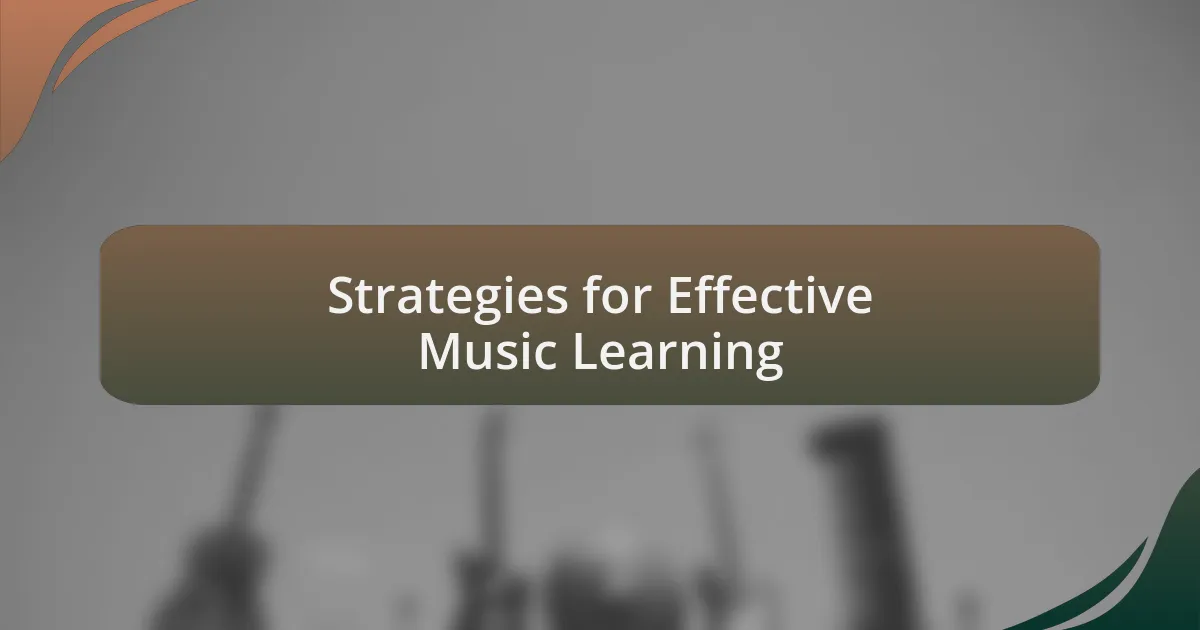
Strategies for Effective Music Learning
Music learning thrives on practical engagement, and one effective strategy I’ve discovered is the use of improvisation. I once guided a group of beginners in spontaneous musical creation, stressing that it was okay to make mistakes. Watching their initial hesitations transform into laughter and excitement taught me that freedom in music encourages creativity and confidence. How often do we allow ourselves that creative space in our musical journeys?
Another powerful approach involves integrating technology into music education. I remember introducing a software program that allowed students to compose and edit their own pieces. The thrill on their faces when they heard their unique creations was unforgettable. It highlighted for me the importance of using tools that resonate with students’ interests and can make learning more interactive. Can you see how blending technology with traditional methods expands possibilities?
Collaboration is another cornerstone of effective music learning. I facilitated a project where students collaborated on an arrangement of a popular song, each contributing their unique flair. The teamwork not only enhanced their musical skills but also fostered a sense of community and shared accomplishment. Isn’t it fascinating how collaboration can teach not just music, but also vital life skills?
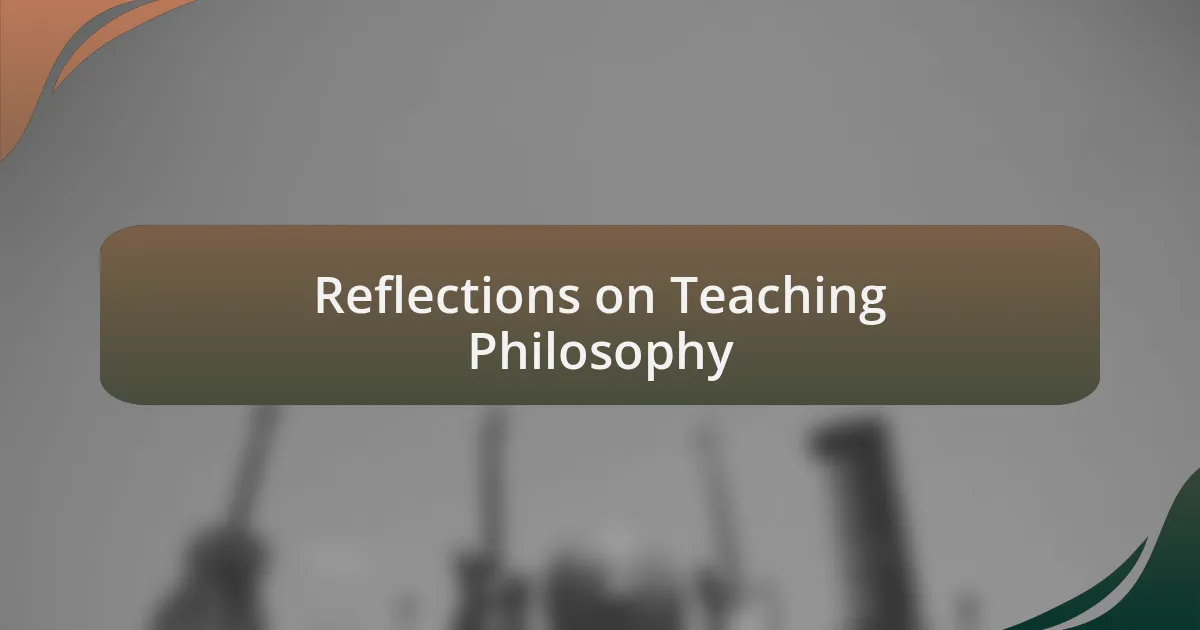
Reflections on Teaching Philosophy
The philosophy behind my teaching often revolves around the belief that every student has a unique musical voice waiting to be unveiled. I recall a time when I worked with a shy student who struggled to find confidence in her guitar playing. By focusing on her individual strengths, we explored personalized pathways in music that ignited her passion. Isn’t it rewarding to witness such transformations when we recognize and nurture each learner’s individuality?
Another key element of my teaching philosophy is the idea that learning should be a joyful experience. Once, during a particularly challenging session, I decided to turn the lesson into a game, incorporating rhythm challenges that felt more like play than work. The shift in energy was palpable; suddenly, the students were engaged and laughing, proving that a playful approach not only fosters skill acquisition but also deepens their love for music. How often do we forget to infuse joy into our lessons?
Finally, I believe in the power of reflection as a teaching tool. After each class, I encourage students to consider what they enjoyed and what they found challenging. This practice not only helps them identify their own learning processes but also opens up dialogue that can enhance my teaching methods. Have you ever stopped to think about how reflective practices could impact your own growth as a musician or educator?